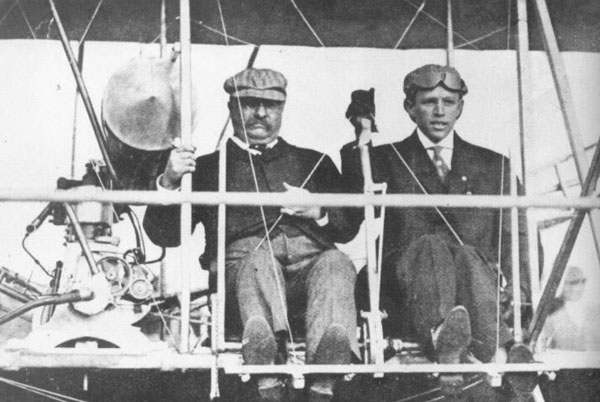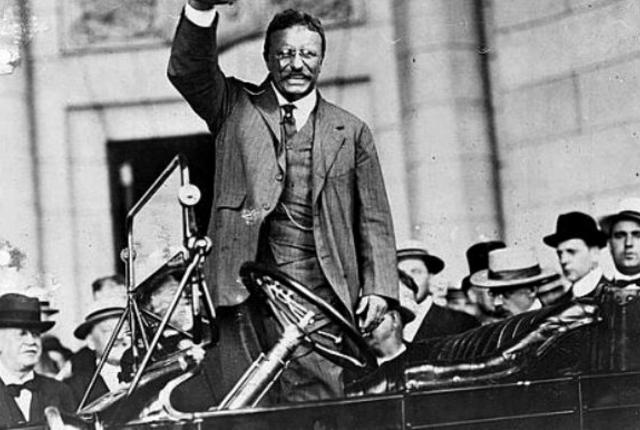When President Theodore Roosevelt loaded into the Columbia Electric Victoria Phaeton on August 22, 1902, he wasn’t the first president in a car. William McKinley rode in a Stanley Steamer back in 1899.
Roosevelt was, however, the first to cruise around publicly. Of course, this was long before people used words like cruise to talk about cars. They barely used the word car.
After a boat transport to New Haven, Connecticut, Roosevelt took his seat in the Phaeton at the whims of two chauffeurs.
His tour would carry him from New Haven to Hartford, through the bad parts of town and the city centers, affording him the opportunity to speak to thousands.
This was a sign of the times to come for presidents. The train was still a valuable tool for campaigning and would remain so, but in the coming decades, the car would gain momentum.
Roosevelt, as always, was ahead of the pack.
Sign of the Times

Olds’ Factory 1902 | mgrow.org
In 1902, cars were yet the playthings of the wealthy. Humanity was on the brink of a transportation revolution, only in the first years of Ransom E. Olds’ assembly line.
With automobiles, there were more concepts than standards, but the basic idea was a horseless carriage. The Columbia brand wouldn’t last, but they were a promising New York brand at the time.
Most of the Columbia cars were electric, but they produced some gas models too. At the time, the market split between the two, electric and gas. By this time, steam powered cars were losing, well, steam.
The Columbia Roosevelt rode in was electric. It bragged 30 miles of distance on one charge, and could go 12 miles per hour with two passengers and an operator.
Like most cars on the market, it had wooden rims and pneumatic tires. This was the future of travel.
The Tour
Roosevelt arrived via yacht in New Haven. His carriage, named the Mayflower, would go too fast for the newly appointed secret service to keep up, so they had to ride bicycles.
There was one on either side, one in front, and one in back. That too was a first, the first presidential motorcade.
People lined the streets in the tens of thousands. Their excitement over the event was deafening. Roosevelt would make three stops before the tour ended at the Coliseum in Hartford.
First he spoke at the platform before starting the tour. There, 1,000 children school kids sang to the popular president. He thanked the children and the people who showed to support him, and the motorcade was on their way.
The tour ended in Hartford, Connecticut. there, 10,000 working men greeted the president in Pope Park.
Of that occasion, Roosevelt had this to say:
“…I came here to say some words this evening myself, but nothing that I can say will in any way have the significance that the gift from the wage-workers of Harford…”
One could barely hear him for all the applause.
Ahead of the Pack

Teddy in a plane | nps.gov
Teddy Roosevelt was a rugged president, a man’s man, and an exercising adult long before anyone but athletes exercised. He was also a student of life, well educated, but not closed off to learning.
That he was the first who rode in a car is no surprise. He was also the first President in a submarine, the first to ride in a plane (although not as president).
President Woodrow Wilson, the 28th president, would famously campaign from the back of a train in the teens, even though Ford was cranking out Model-Ts by that point.
Even as late as President Harry Truman, the 33rd president, use of the train remained an old timey campaign strategy. But, the automobile slowly took over as roads and cars improved.
President John F. Kennedy, the 35th president owns the most famous car ride for a president. His last ride in 1963 changed the presidential motorcade protocols forever.
Whatever else Roosevelt accomplished he was the first automobile president. Those who followed Teddy Roosevelt ate his dust.
Sources: learning.blogs.nytimes.com, nytimes.com kcstudio.com


